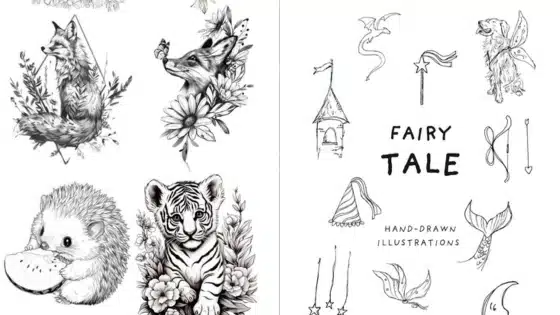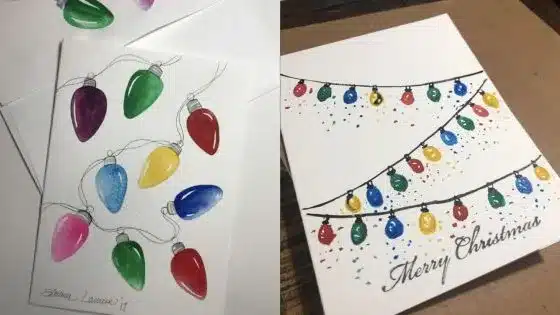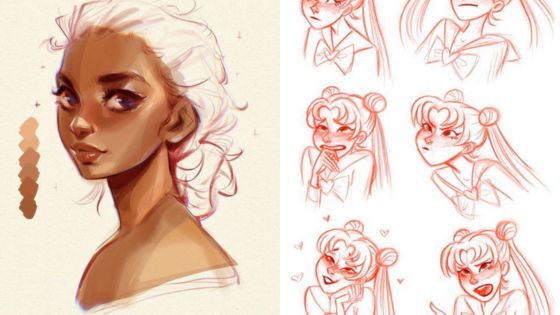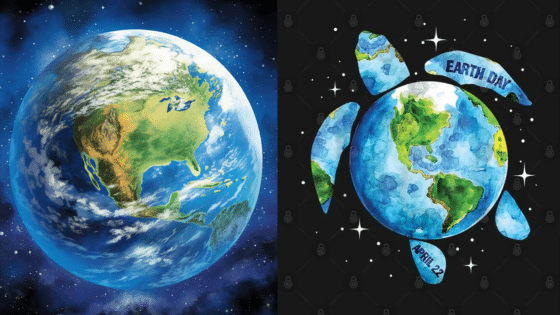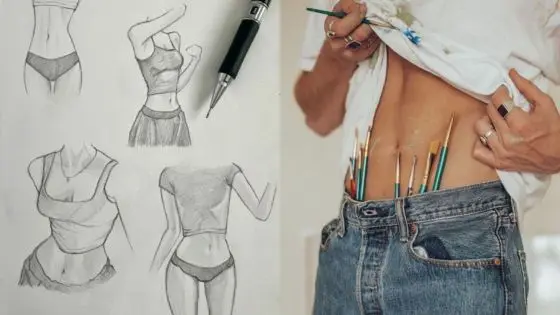Anime sketching techniques help artists break down complex characters into simple shapes, making the drawing process easier and more fun. By starting with basic forms like circles and rectangles, anyone can build the foundation of an anime character before adding details like eyes, hair, and clothes. Using these simple steps helps artists create clean, expressive sketches that capture the unique style of anime.
Many find drawing anime faces and poses challenging because of their distinct proportions and expressions. With practice, artists learn how to balance clean lines and dynamic poses that bring a character’s personality to life on paper. Learning how to sketch step-by-step allows artists to improve steadily without feeling overwhelmed.
These techniques also encourage creativity by letting artists experiment with features and styles in a structured way. Whether someone is drawing a favorite anime character or creating their own, understanding the basics makes the process enjoyable and rewarding.
Fundamentals of Anime Sketching
Anime sketching begins with having the right tools, knowing how to draw characters with the right size and shape, understanding basic anatomy, and mastering clean, smooth lines. These elements help create clear, appealing art that looks balanced and dynamic.
Essential Drawing Tools
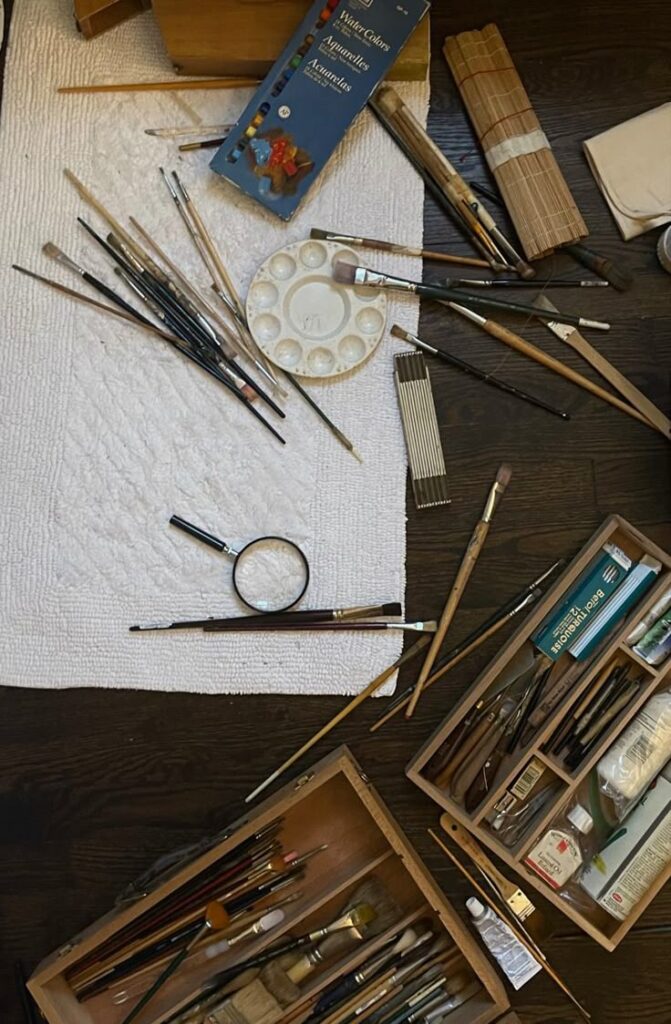
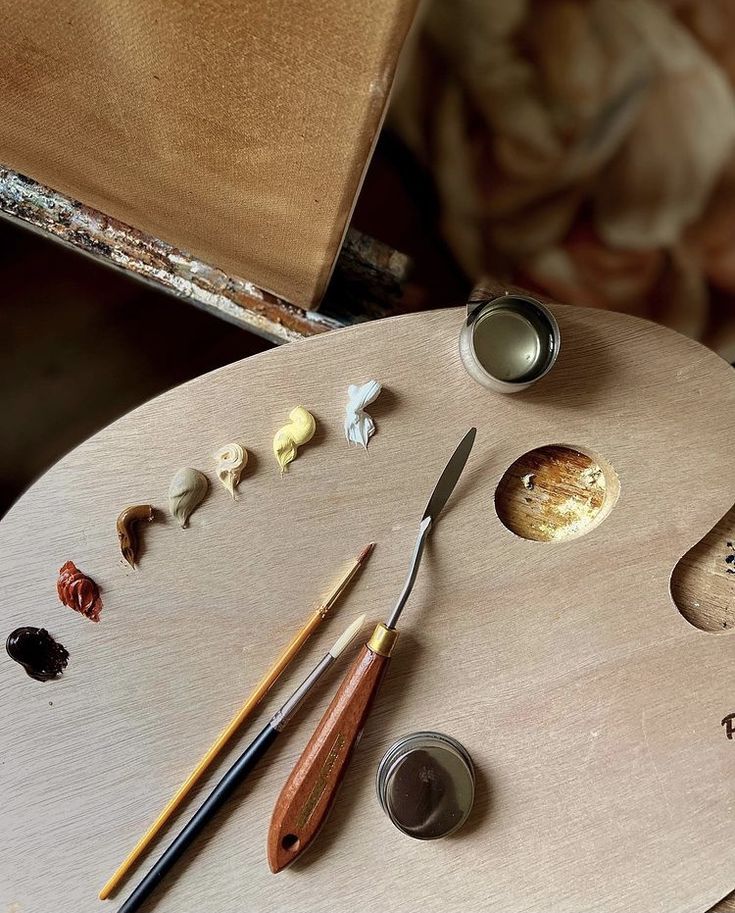
Choosing the right tools makes drawing easier and more enjoyable. Most artists start with a pencil for sketching because it allows easy corrections. Mechanical pencils or standard HB pencils work well. For outlines, fine liners or ink pens with different tip sizes add variety to line thickness.
Paper quality also matters. Smooth, white paper helps pens glide better and keeps lines crisp. Digital tablets have become popular, offering many brushes and undo options. But beginners can create great anime art with simple sketchbooks and pencils.
Erasers should be soft and precise, like kneaded erasers for lightening lines without damaging paper. Using a ruler can help with drawing straight lines or framing the sketch.
Understanding Proportions
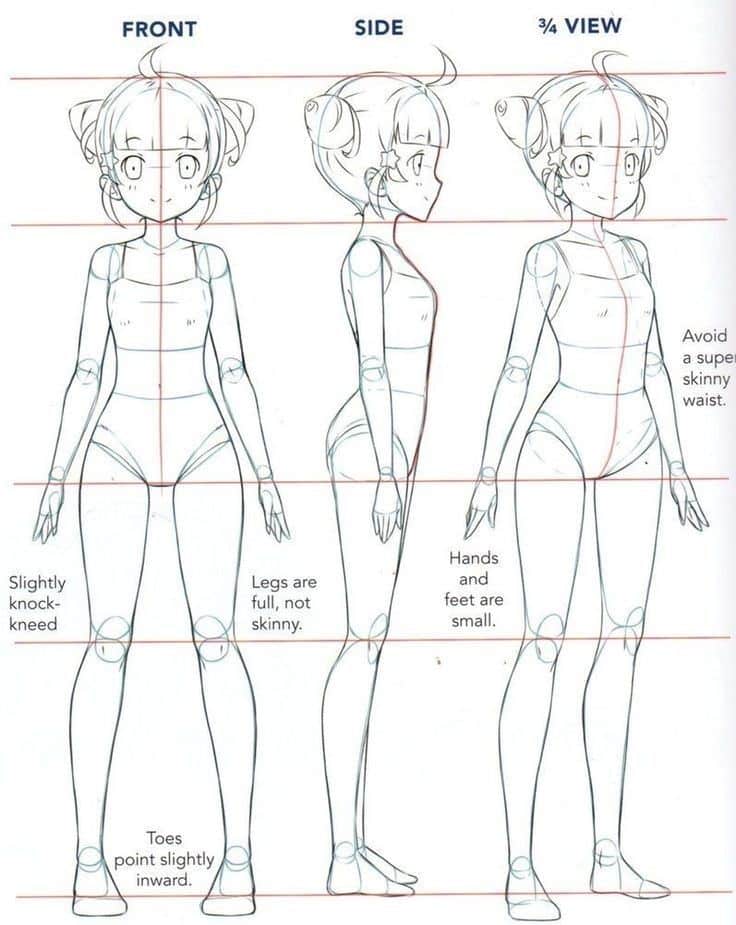
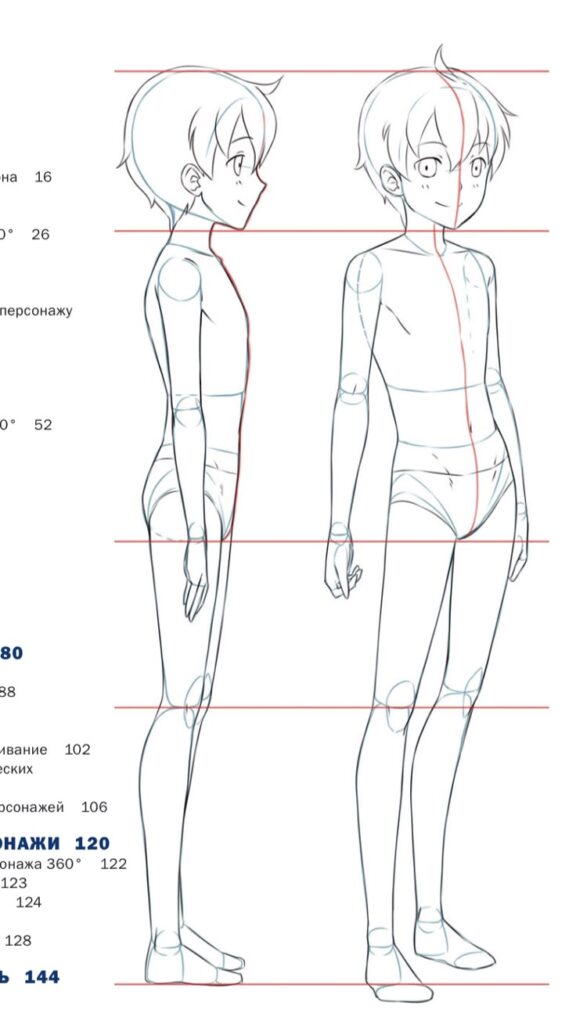
Anime style exaggerates some features, but keeping proportions balanced is key. Typically, the head is larger compared to the body than in real life, often about 1/6 to 1/7 of total height. Eyes are big and wide, noses small, and mouths compact.
Artists start with simple shapes — circles for the head, ovals for the torso, and rectangles or cylinders for limbs. This framework helps keep the character’s pose natural and consistent.
Understanding how body parts relate in size lets the artist adjust poses without distorting the figure. For example:
- The arms should reach roughly mid-thigh.
- Legs take up half the height.
- Hands align with the middle of the body when at rest.
Practicing with different styles allows artists to find what suits their work.
Basic Anatomy for Anime Characters
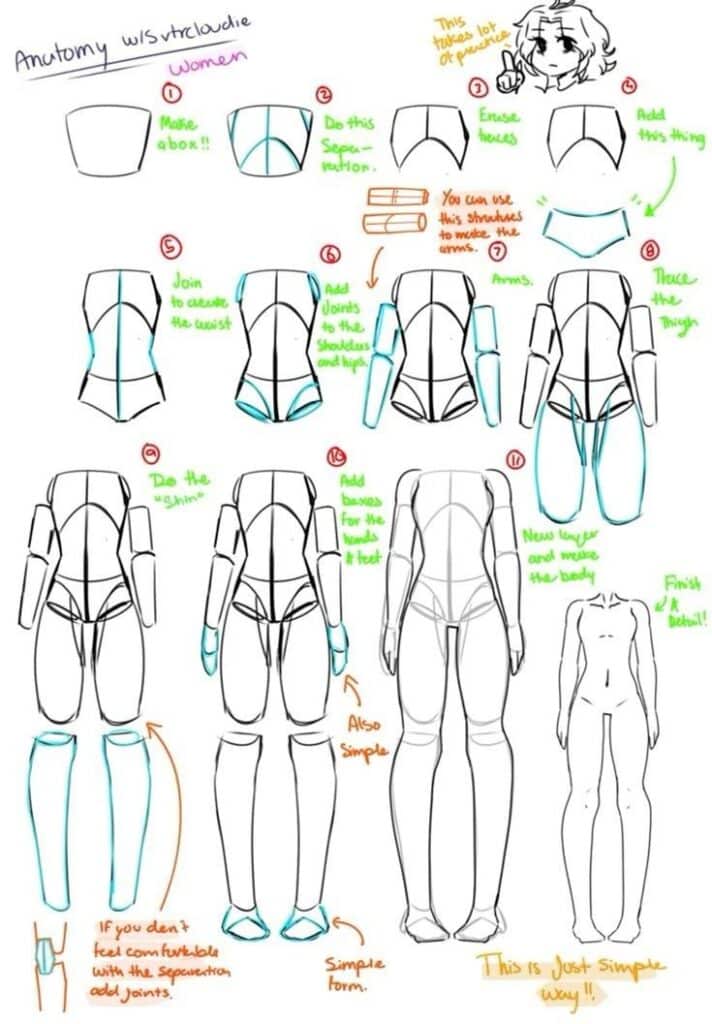
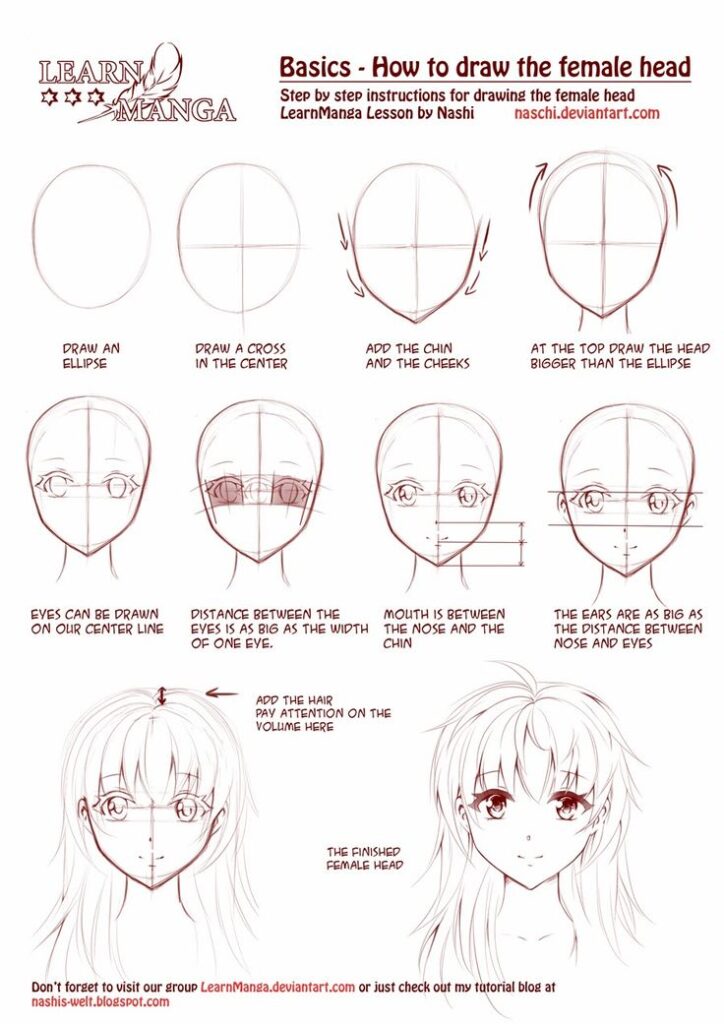
Knowing basic human anatomy is important even in anime style. It helps make characters look believable and expressive. Though anime simplifies muscles and bones, the core structure remains similar to real bodies.
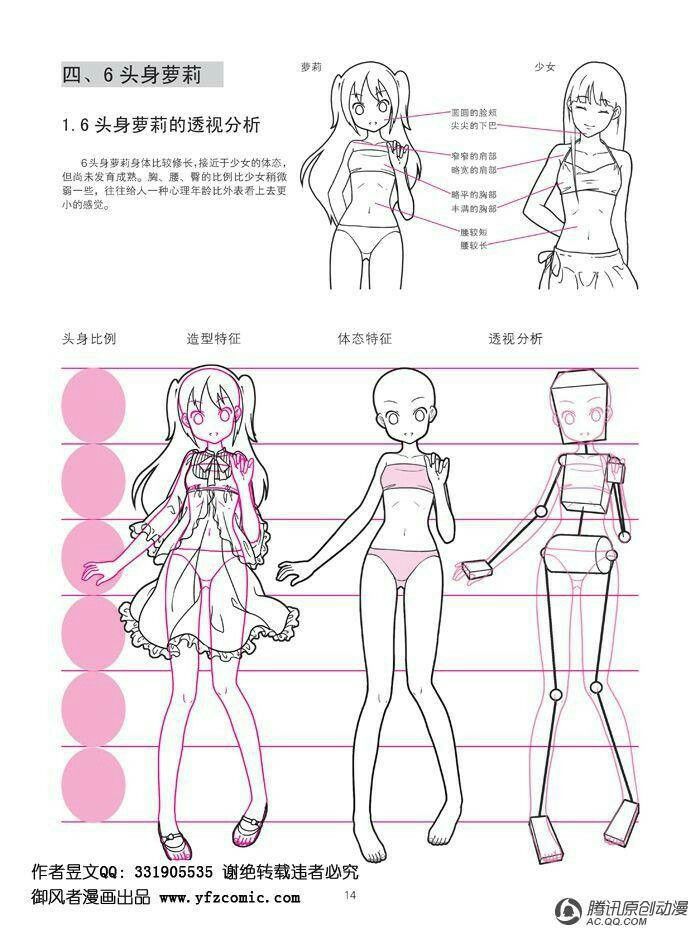
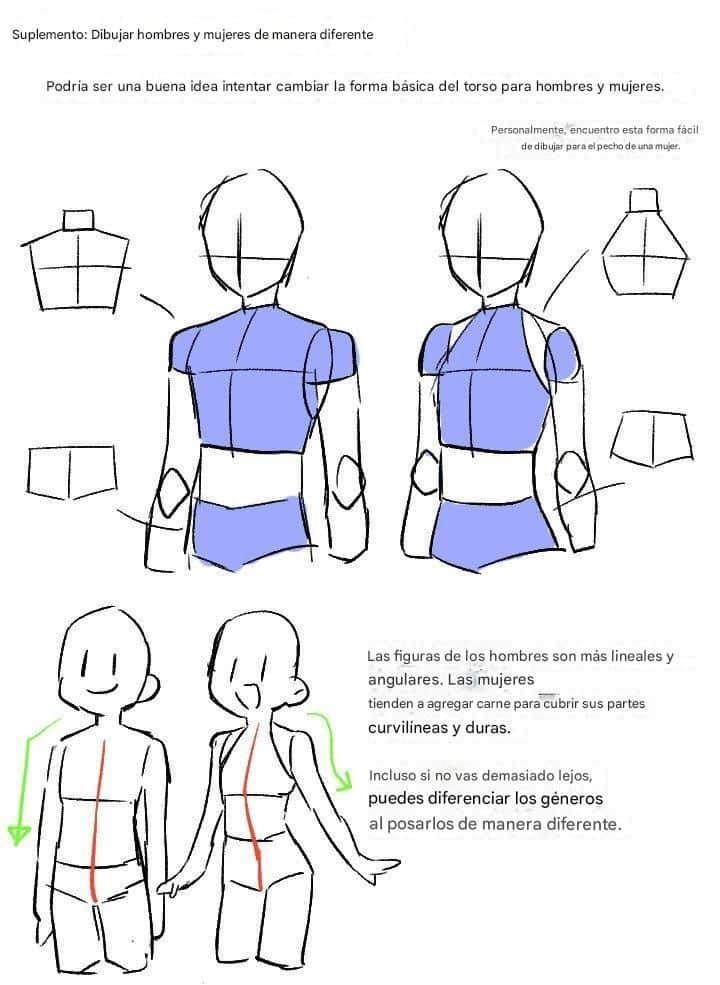
Artists should study the skeleton’s main joints — shoulders, elbows, knees — and how they move. Muscles are often shown with smooth lines and curves in anime, creating a softer look. Beginners often map out the spine’s curve first, then add the rib cage and pelvis for posture.
Facial structure is simplified but follows basic shapes: the jaw tapers toward the chin, and eyes are positioned about halfway down the face. Attention to these helps with different expressions and character ages.
Line Quality and Flow
Line work affects how sharp and clean a sketch appears. In anime, lines are usually smooth and vary in thickness. Thicker lines can show shadows or foreground, while thin lines highlight small details.
Artists practice controlling pressure with their drawing tool. Light pressure creates fine, delicate lines, while harder pressure gives bolder strokes. This contrast adds depth and interest to the drawing.
Lines should flow naturally with the shape. Avoid shaky or stiff lines by drawing confident, long strokes when possible. Many artists sketch loosely first, then go over to make clean outlines.
Maintaining a steady hand and practicing line drills helps improve flow and consistency.
Sketching Anime Faces and Expressions
Anime faces focus on clear shapes, bold eyes, and simple but expressive features. The key is to get the face’s overall proportions right, then add detail to the eyes and mouth. Expressions come from subtle changes in eyebrows, eyes, and mouth positions.
Drawing Anime Eyes
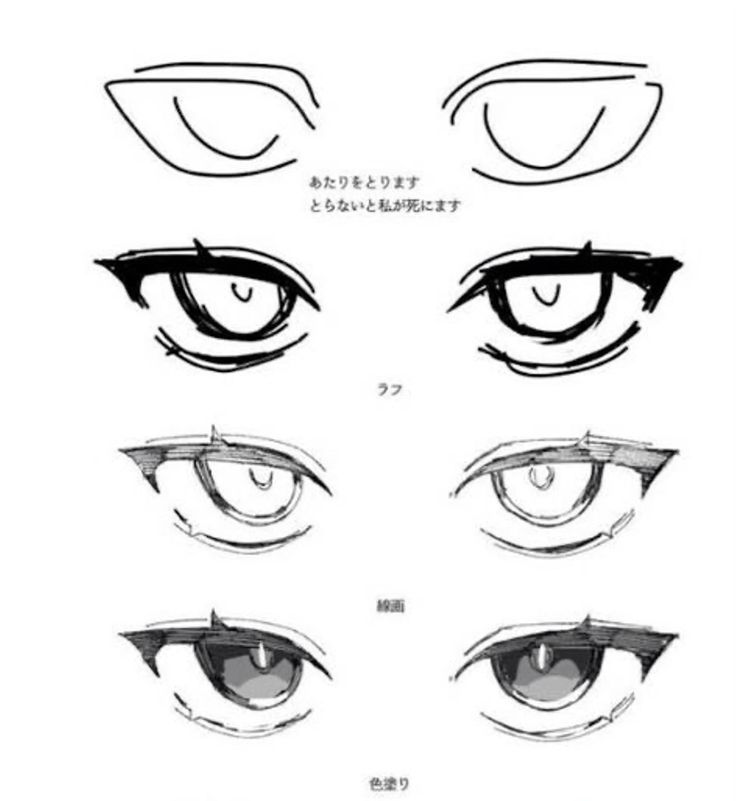
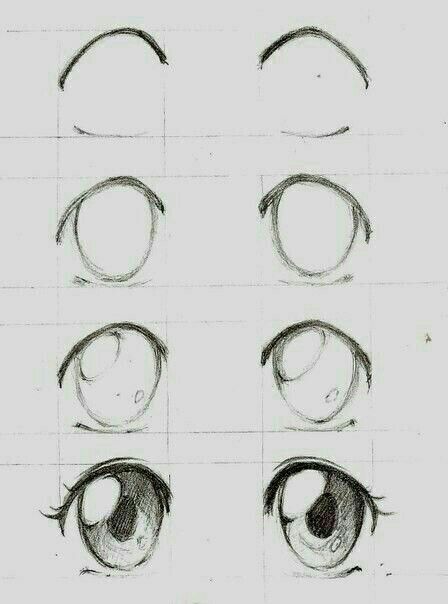
Anime eyes are usually large and detailed to show emotion. Artists start by drawing an almond shape or rounded rectangle. The top lashes are often thicker and darker.
Inside the eye, the iris and pupil take up much of the space. Light reflections are drawn as white spots or shapes to make the eyes look shiny. Multiple layers of shading add depth.
Eyebrows sit above the eyes and match the expression. Thin, curved brows can show softness or surprise. Thick, angled brows can show anger or determination. Proper eyebrow placement helps balance the face.
Facial Structure Techniques
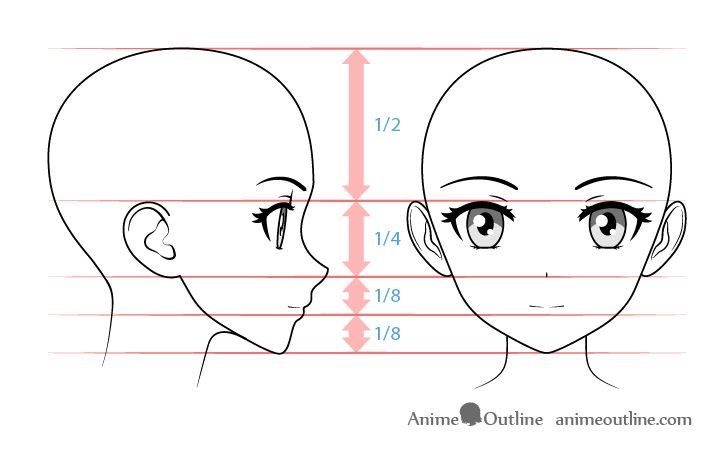
Anime faces usually have simple shapes: a rounded chin, smooth jawline, and a small nose. Artists often begin with a circle for the skull and add the jaw by drawing downward lines.
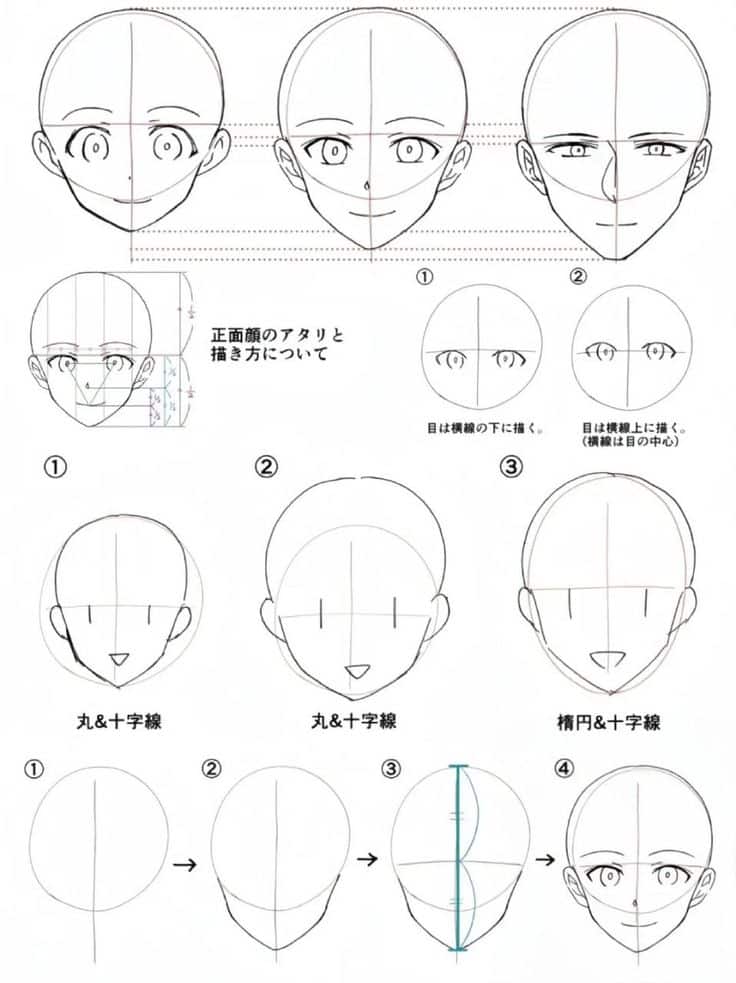
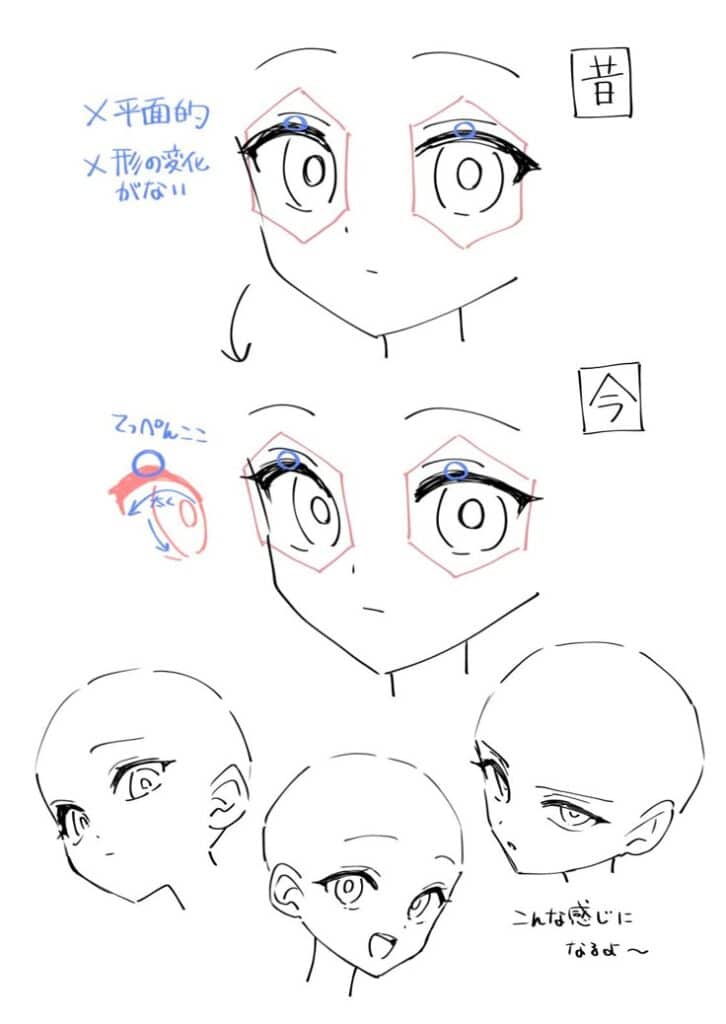
The eyes typically sit halfway down the head. The nose is small and located a little below the eyes. Mouth placement is lower still, near the chin.
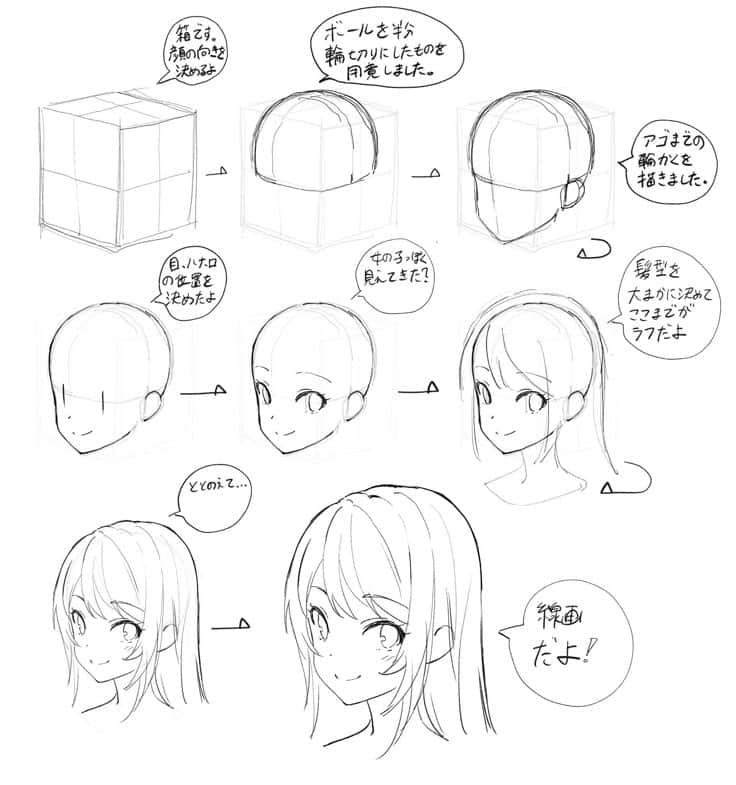
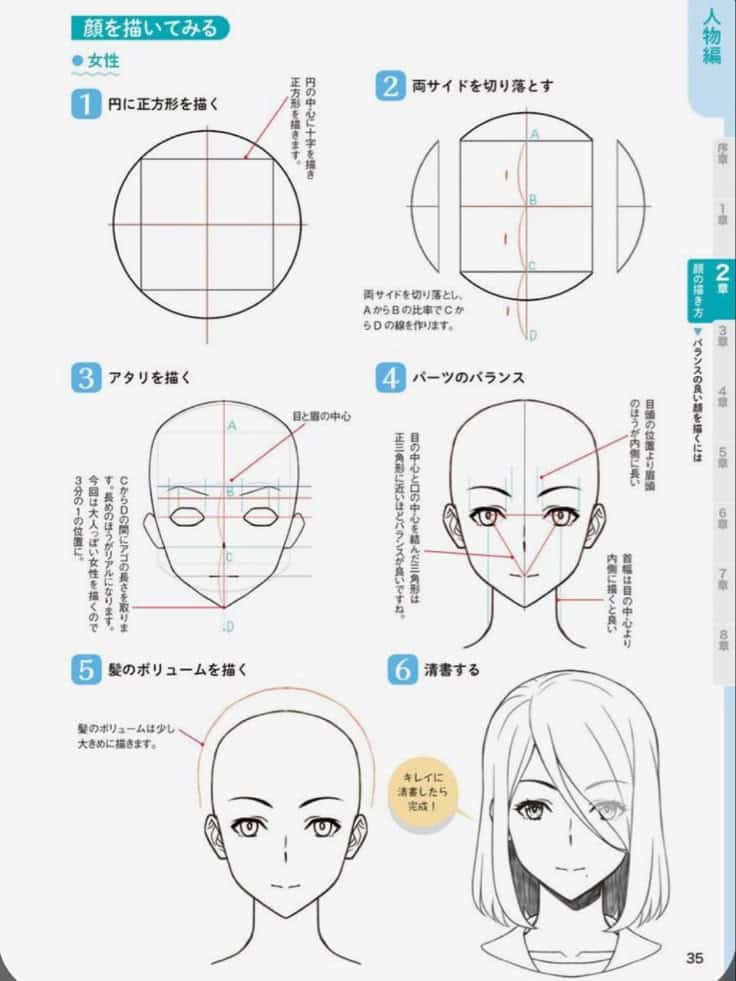
Using light guidelines helps keep proportions correct. The width of the face depends on the character’s age and gender. Younger characters have rounder cheeks. Male faces tend to be more angular.
Capturing Emotions
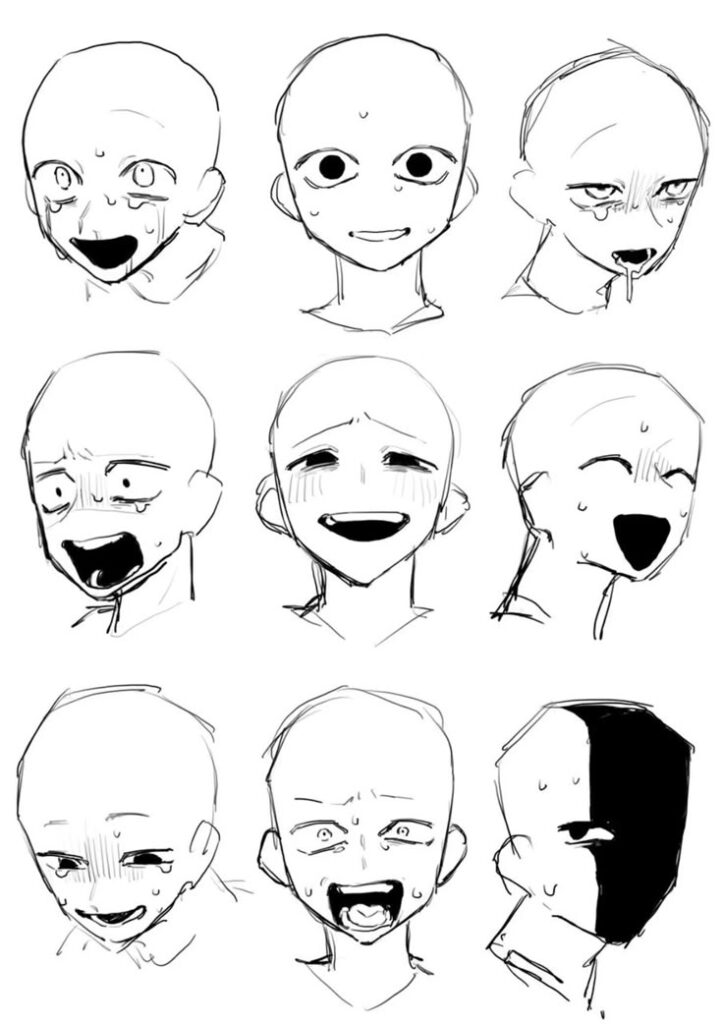
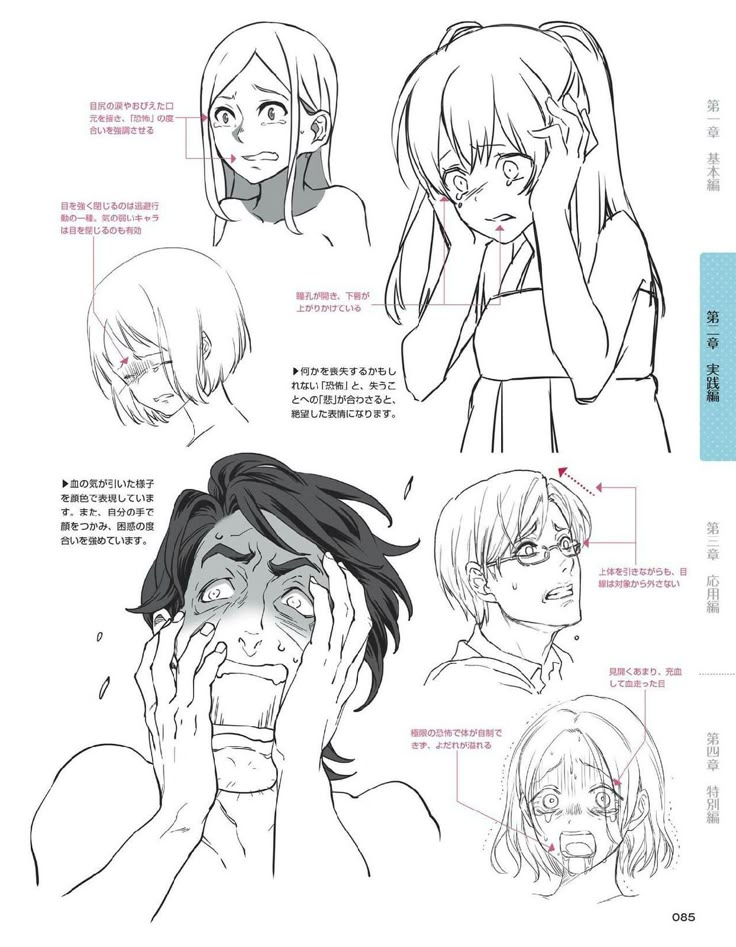
Expressions in anime depend on the shape and position of eyes, eyebrows, and mouth. To show happiness, eyes might be wide open or curved upward, and the mouth forms a smile.
For sadness, eyes can look down or be half-closed, with eyebrows tilted upwards in the middle. The mouth might be small or slightly open. Anger is shown with narrowed eyes, furrowed brows, and a tight mouth.
Small changes in these features create big differences in feelings. Hands or head tilts often add to the emotion and make the character more lively.
Techniques for Dynamic Poses and Movement
Capturing energy and life in anime sketches means focusing on how the body moves and reacts. This involves using quick, flowing lines to map out poses and using shapes that show the body’s action. Knowing how to suggest motion with simple tools makes characters look more natural and exciting.
Gesture Drawing
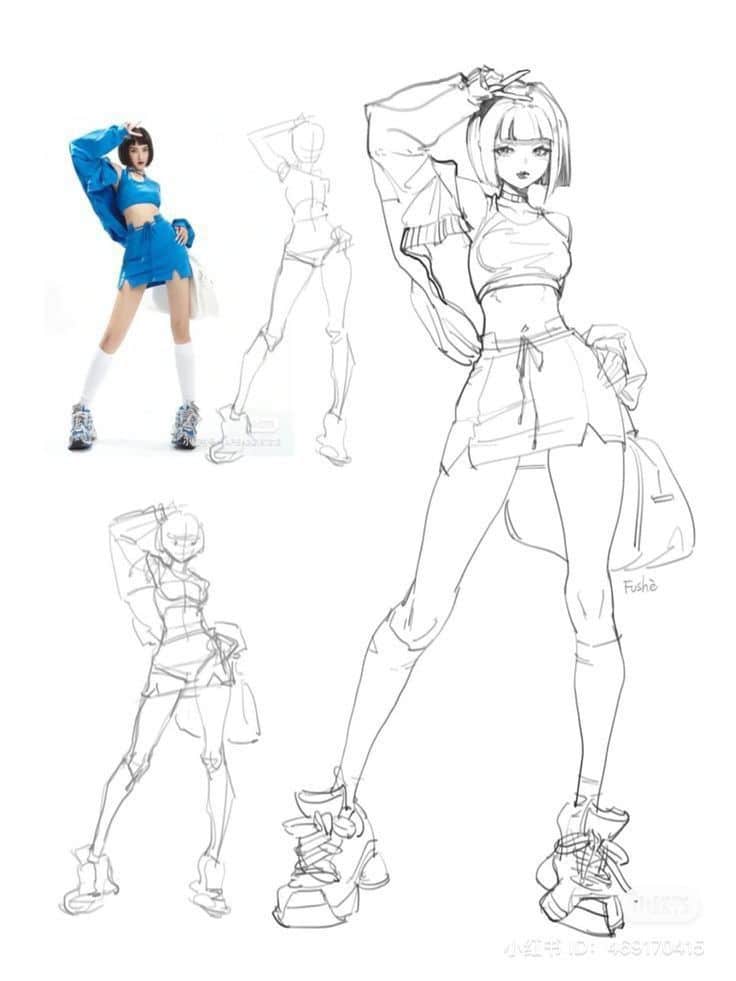
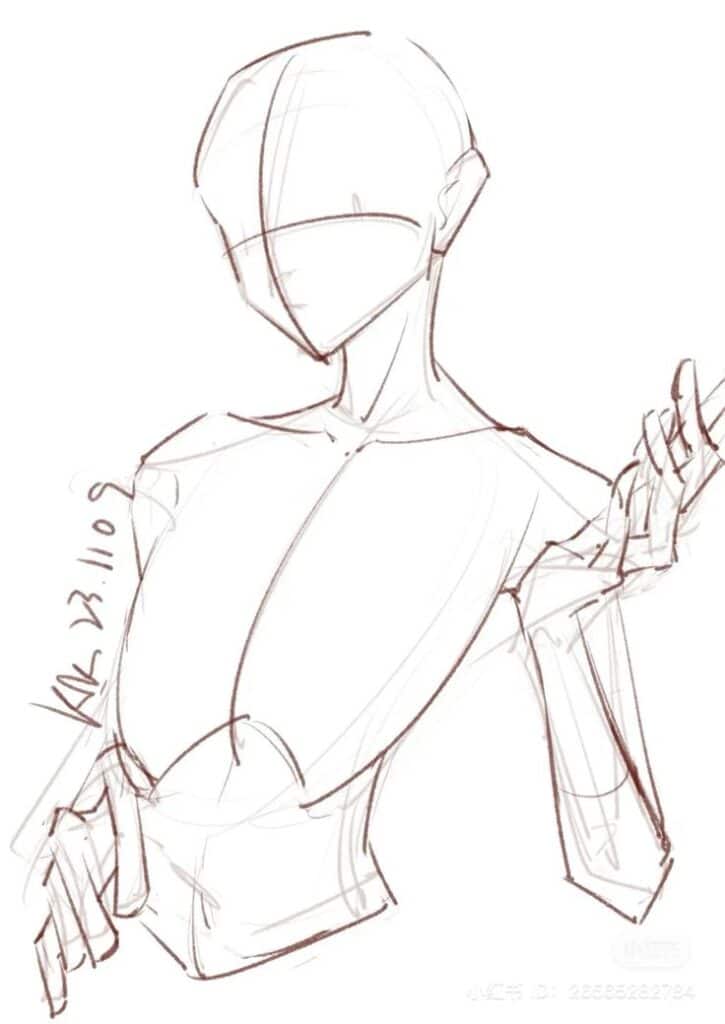
Gesture drawing is about quickly sketching the basic form and movement of a figure. It focuses on the overall flow rather than details. Artists use loose lines to capture the main energy and motion of a pose in a short time, often just a few minutes.
This technique helps in understanding the body’s rhythm and balance. It allows artists to avoid stiffness by emphasizing how limbs and the torso connect in motion. Gesture drawing is a useful warm-up and sets the foundation for more detailed work.
Action Lines
Action lines, also called “line of action,” are strong, curved or straight lines that run through a figure to show its main movement direction. These lines guide the pose’s flow and keep the character balanced.
Using action lines helps in creating a clear and dynamic posture. Artists draw the line first then build the character’s shape and limbs around it. This keeps the pose lively and prevents parts from looking disconnected or flat.
Conveying Motion
Showing movement in a still sketch involves exaggeration and visual cues. Artists can use blur effects, motion lines, or pose exaggeration to suggest speed or force.
For example, bending a limb more than usual or tilting the body can make the pose feel active. Using overlapping shapes or repeated lines near moving parts can also create a sense of motion, giving life to the character even in a frozen moment.
Adding Details and Refining Your Sketches
At this stage, the character’s look becomes clearer with more specific features and elements. The focus is on adding textures, shapes, and small touches that bring personality and realism. Attention to clothes, hair, and the surroundings helps make the sketch complete and visually interesting.
Clothing and Accessories
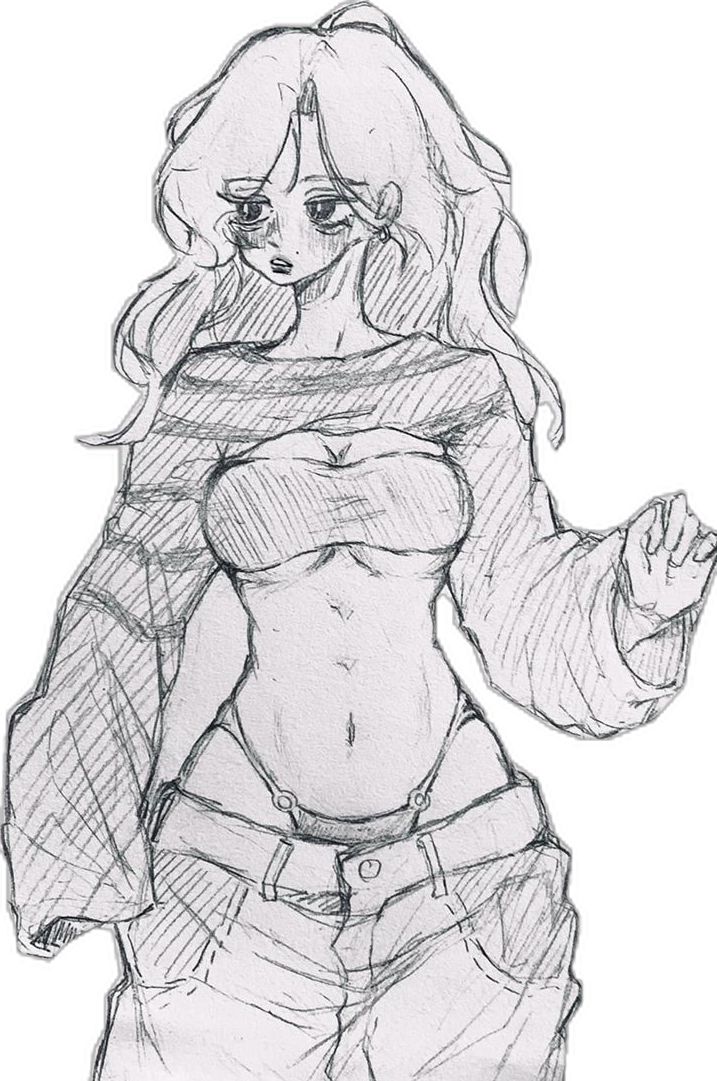
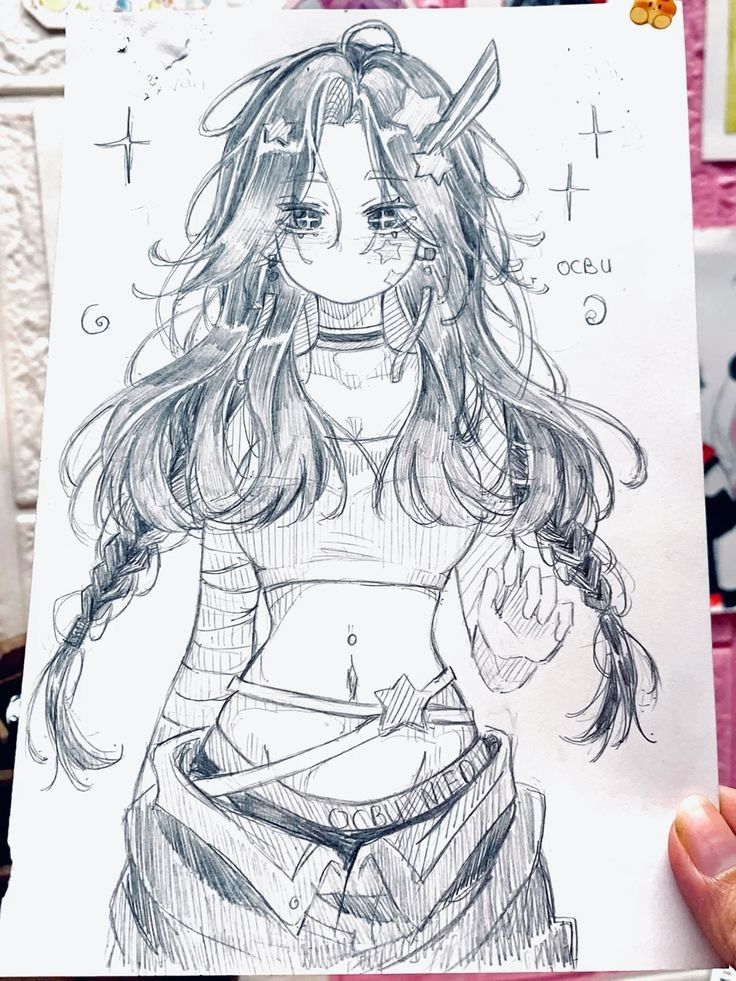
Clothing adds personality and context to an anime character. The artist should start by defining the fabric’s flow and how it fits the body. Wrinkles, folds, and creases should follow the movement of the character or how gravity affects the clothes.
Accessories like belts, jewelry, or bags can show more about the character’s lifestyle or story. It’s important to keep these details consistent and not overcrowd the sketch. Using simple lines to outline shapes before adding shading or texture helps control the drawing process.
Small details like buttons, seams, or patterns add depth. Sketching these delicately but clearly makes the clothes look believable without taking attention away from the character’s face.
Hair Styles and Textures
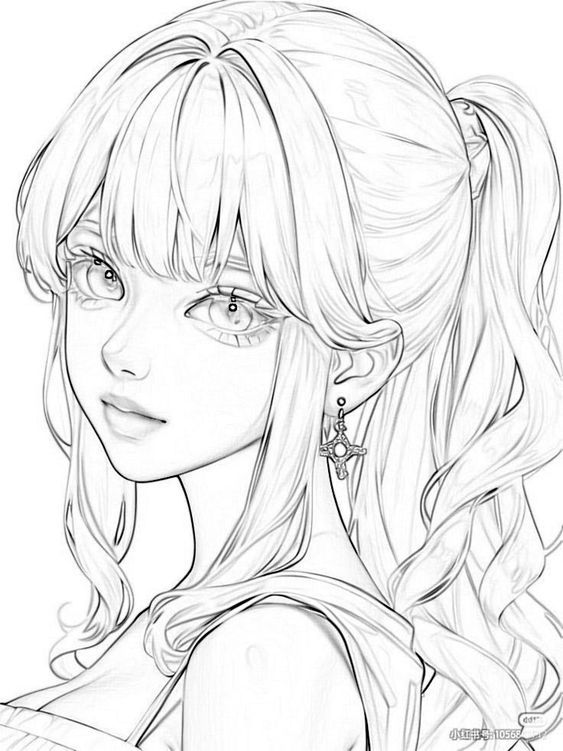
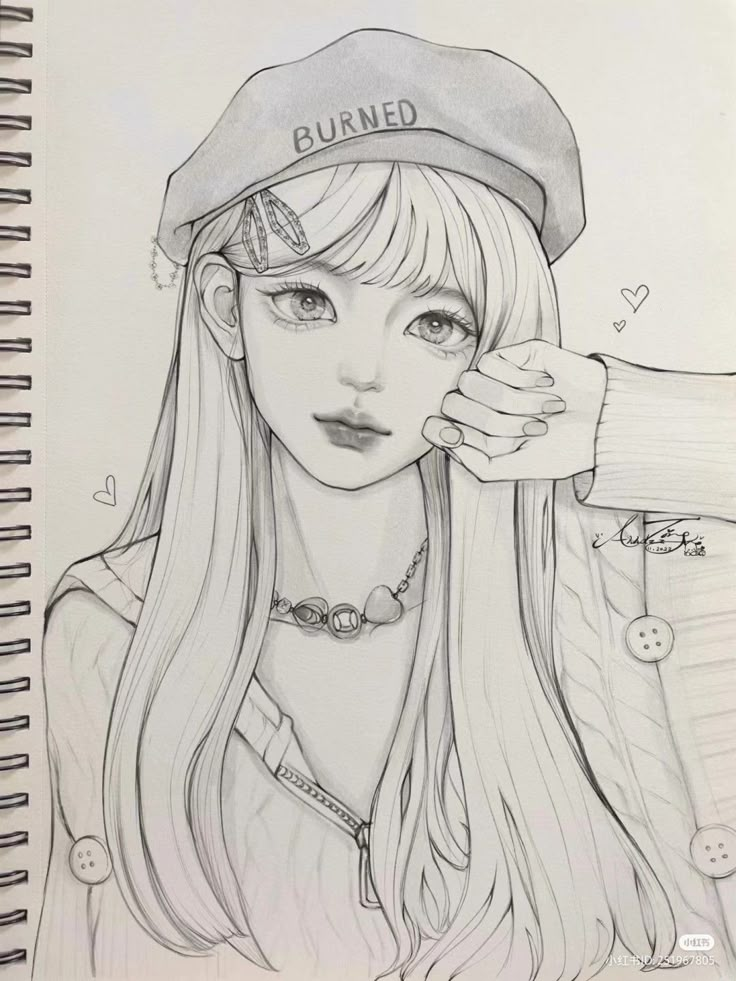
Hair can define the character’s style and mood. Start by blocking out large shapes that follow the general flow of the hairstyle. Once the big sections are in place, add individual strands and texture.
It’s important to show how hair falls naturally, with volume and direction. Light and shadow areas should highlight the movement and layers of hair.
Different anime styles use various approaches to hair texture. Some prefer sharp, clean lines for a sleek look, while others use softer shading for a more natural feel. Either way, breaking hair into chunks before adding detail makes it easier to control.
Background Elements
Backgrounds give setting and mood to the character, even if simple. Sketching basic shapes like buildings, trees, or furniture helps place the character in a scene.
Adding perspective lines early ensures the background fits well with the character’s position. Details should match the overall style and not overcrowd the sketch.
Simple textures and light shading in backgrounds can make the drawing feel balanced. Background elements support the character without stealing focus, creating a fuller and more interesting image.
- 826shares
- Facebook0
- Pinterest826
- Twitter0
- Reddit0








